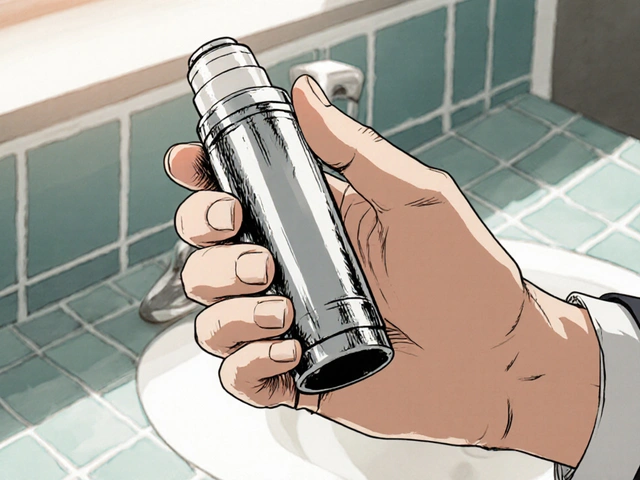Baclofen – What It Is, How to Use It, and Where to Get It Safely
If you’ve been told to take baclofen, you probably want to know what the drug does and if it’s right for you. In plain terms, baclofen is a muscle relaxer that doctors prescribe for spasticity – the tight, involuntary muscle stiffness that can happen after conditions like multiple sclerosis or spinal cord injury.
Most people start with a low dose and increase slowly to avoid side‑effects. The usual adult starting dose is 5 mg taken three times a day, and doctors may raise it by 5 mg every few days until they hit the sweet spot – often between 30 and 80 mg daily.
How Baclofen Works
Baclofen acts on the spinal cord. It blocks certain nerve signals that make muscles contract too hard. Think of it like turning down the volume on a speaker that's blasting too loud. When the signal is quieter, your muscles relax and you get better movement control.
Because it works directly on nerves, baclofen can help with pain caused by muscle tightness. It won’t cure the underlying disease, but it can make daily tasks – like walking or dressing – a lot easier.
Common Side Effects You Might Feel
Most side effects are mild and go away as your body gets used to the medicine. The most frequent ones include:
- Drowsiness or feeling unusually tired
- Dizziness, especially when you stand up quickly
- Weakness in the arms or legs
- Nausea or stomach upset
If you notice severe reactions – such as trouble breathing, rapid heartbeat, or a rash – call your doctor right away. Stopping baclofen abruptly can cause withdrawal symptoms like seizures, so always taper off under medical supervision.
Buying Baclofen Safely Online
Many people look for cheaper options online, but you need to stay safe. Here’s a quick checklist:
- Check the pharmacy’s license. Legit sites list their registration number and have a physical address you can verify.
- Read reviews. Look for real‑patient feedback, not just glowing marketing copy.
- Avoid “no prescription” offers. Baclofen is prescription‑only in most countries. A reputable pharmacy will ask for a valid prescription before shipping.
- Compare prices. Prices that seem too good to be true usually are. Use a few sites to gauge the average cost.
- Secure payment. Choose sites with SSL encryption (look for https://) and trusted payment processors.
When you find a trustworthy pharmacy, make sure the packaging looks professional and includes a clear label with dosage instructions. Keep your prescription handy in case customs or the pharmacy asks for it.
Tips for Getting the Most Out of Baclofen
Take baclofen at the same times each day – consistency helps keep blood levels steady. If you feel drowsy, schedule doses when you can rest or avoid driving right after taking a pill.
Avoid alcohol while on baclofen; mixing the two can increase sedation and raise the risk of falls. Also, talk to your doctor before adding other muscle relaxers or sleep aids.
Track how you feel in a simple notebook: note dose, time, any side effects, and changes in muscle tightness. This record makes it easier for your doctor to fine‑tune the dosage.
Remember, baclofen can improve quality of life, but it works best when paired with physical therapy or stretching routines. Ask your therapist how to combine exercises with medication for optimal results.
If you’re still unsure about whether baclofen fits your situation, reach out to a pharmacist or doctor. A quick chat can clear up doubts and keep you on the right track.
Baclofen: Uses, Side Effects, Dosage, and Patient Guide
Explore how baclofen works, what it's used for, real-life tips, and side effects. Get the facts about dosing, safety, and what doctors wish you knew.
About
Health and Wellness
Latest Posts


Albuterol Inhaler Cleaning Guide: Proper Maintenance Steps
By Orion Kingsworth Oct 25, 2025

Computer Vision Syndrome: Proven Ways to Prevent Digital Eye Strain
By Orion Kingsworth Dec 15, 2025

Home Remedies for Yeast Infections of the Skin: What Works and What Doesn't
By Orion Kingsworth May 6, 2023

